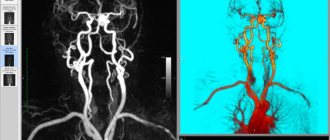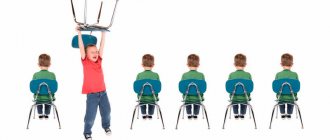Stuttering is a violation of the tempo and rhythm of speech organization, which is associated with a convulsive (contracted) state of the muscles that form speech. Stuttering is known as one of the ancient speech disorders. The essence of this condition, the mechanisms of its development, causes, symptoms and approaches to treatment differed significantly in different periods of the development of speech therapy. Different views on this problem are due to different levels of science, teachings and schools dealing with this condition. In this article we will approach this topic from the perspective of modern teachings and achievements in the field of treatment of this condition.
Stuttering is known as one of the ancient speech disorders.
Causes of stuttering
There are 2 types of causes of stuttering. The former create a predisposition, the so-called “soil” for the development of the disease. The second group of reasons are “impetuses” to development, reasons.
Predisposing reasons
A combination of one of the following unfavorable conditions and a strong irritant (stress) is enough for the development of stuttering in a child.
A lot depends on the parents. If parents have the so-called Neurotic burden, which includes infectious, neurological and other diseases that negatively affect the functions of the nervous system, then all these factors can affect the child. Infections can be transmitted, and increased irritability can negatively affect the child’s mental state.
A lot depends on the parents.
When we evaluate developmental causes, it is important to look back to the period before, during and after childbirth. It is necessary to study the presence of birth injuries, infections, asphyxia and other factors that may affect the functioning of the brain. It is equally important to study the child’s family, because it is likely that among his blood relatives there may be people who stutter.
As for the child’s body, it is necessary to pay attention to its neurogenic characteristics and constitutional predisposition. These reasons include increased vulnerability and irritability, nightmares, enuresis, and diseases of the nervous system. Of course, we should not forget that a child may go through a stage in which age-related anatomical and physiological features of the central nervous system are present.
And of course, one of the most important things is that the child should not feel disadvantaged in the family, should not face alienation and misunderstanding on the part of the parents. It is important to ensure that the baby has enough positive emotions that he receives with his parents.
Producing causes
Quite often, stuttering develops against the background of organic (physical) diseases of the brain, which lead to disturbances in the speech-motor system.
Stuttering often develops against the background of infectious and physical diseases.
Infectious processes accompanied by the development of encephalitis and meningitis can lead to depletion of the nervous system and weaken the centers responsible for the movements of the speech-motor apparatus (measles, whooping cough, meningococcal infection).
Many ENT diseases (laryngitis, tonsillitis, sinusitis) lead to changes in the timbre and intonation of the voice, which also negatively affects the formation of speech.
Mental trauma accompanied by severe fear or fright.
A significant reason is inadequate upbringing of the child. This may include increased demands from the child in learning, the formation of the phenomenon of “exemplary” behavior.
Negative, negative attitude of parents towards the child (severity, anger, strictness).
An equally important reason is the child’s unexpected shock, which can be both positive and negative (“excessive” excitement, stressful situations at school, stressful situations in the family).
Simultaneous acquisition of different languages at an early age causes stuttering, usually in one language
In the case of a child learning several languages at an early age, which leads to increased load on various centers of the brain.
Imitating people who stutter.
Symptoms
The main symptom of stuttering is cramps (abnormal contraction of the muscles of the speech apparatus) during speech. Their duration can take from 1-2 to 12-13 seconds, and in some severe cases reach 80 seconds or more.
Be attentive to your child and help him overcome or prevent the development of stuttering.
In children with stuttering, the sequence in the pronunciation of individual words is also disrupted; children lose their train of thought due to pronounced pauses, experience emotional distress and, as a result, acquire character traits of a “defective” person.
Let us dwell in more detail on the feeling of inferiority, since this symptom largely determines the further development and course of stuttering in a child. This feeling is also called “painful fixation” of a stutterer.
There are three degrees of “painful fixation”:
- First Art. (children feel comfortable, and they do not experience embarrassment or shame due to a speech defect).
- Second Art. (children lose a sense of comfort, experience moderate embarrassment, shame due to a speech defect, and try to disguise it)..
- Third Art. (pronounced concentration on their speech impediment, experience severe embarrassment, shame. Usually this degree is noted in children of senior school age).
The effectiveness of treatment for children who stutter directly depends on the degree of “painful fixation.” The higher the fixity, the less favorable the prognosis for speech therapy work.
There are three degrees of stuttering:
- minor - stuttering appears only during excitement (expressed emotions) and during rapid speech.
- moderate - do not stutter at rest and in normal surroundings; Only when emotions are expressed does stuttering appear.
- pronounced - they stutter constantly.
Overcoming stuttering in adolescents and adults using “AIR” devices
MissoulowinL. Ya., Yurova M. S. Overcoming stuttering in adolescents and adults using devices of the “AIR” type // Concept. –2015. –Special Issue No. 23.–ART753. –0.3p. l. –URL: https://ekoncept.ru/2015/753.htm. –ISSN 2304120X. 1 ART75287UDK376.37
Missulovin Leon Yakovlevich,
Honored Health Worker of the Russian Federation, Doctor of Psychology, Professor of the Department of Speech Therapy, Leningrad State University named after A. S. Pushkin, St. Petersburg [email protected]
Yurova Maria Sergeevna, speech therapist teacher, speech therapy school No. 536, Moskovsky district of St. Petersburg, St. Petersburg [email protected]
Overcoming stuttering in adolescents and adults using “AIR” devices
Abstract. The article, in a theoretical and practical aspect, examines modern ideas about the problem of overcoming stuttering in adolescents and adults using devices of the "AIR" type. The authors reveal the main theoretical principles and principles underlying the system of speech therapy work aimed at eliminating stuttering in adolescents and adults in conditions logotherapy center. Key words. Stuttering, Lee effect, correction of stuttering, speech disorders, speech therapy, AIR.Section: (01) pedagogy; history of pedagogy and education; theory and methods of teaching and education (by subject areas).
During the constant search for new, more effective means of overcoming stuttering, the AIR2 device was developed. Let's look at a brief history of his invention, which begins with the discovery of the “Lee effect.” Bernard Lee was an engineer and served on a US submarine. While working with radio equipment, he accidentally played back his own speech in slow motion, thus creating an echo effect. It became difficult for him to speak, as hesitations appeared in his speech. He noticed this and decided to get the opposite result by testing the effect on a person who spoke quickly and stuttered. As a result of the equipment used, this person’s speech became slower, more intelligible, and the number of speech spasms decreased significantly. The resulting effect entered the literature under the name “Bernard Lee Effect” [1–3]. Around the same years, a similar effect was obtained by the Polish physicist B. Adamczyk. Suffering from a severe stutter, he tried to speak into a well and got an echo effect. B. Adamczyk felt that he spoke without stuttering. The Department of Physics at the University of Warsaw, where he worked as an assistant, became interested in the result. This topic was introduced into the department’s scientific work plan. B. Adamczyk successfully completed this work, the results were introduced not only into some medical institutions in Poland, but also in Lodz several street telephone booths were equipped with devices to produce an echo effect. These devices have been successfully used by some people who stutter [4]. Subsequently, similar results were obtained by M.E. Khvattsev, who used Missulovin L. Ya., Yurova M. S. Overcoming stuttering in adolescents and adults using devices of the “AIR” type // Concept. –2015. –Special Issue No. 23.–ART753. –0.3p. l. –URL: https://ekoncept.ru/2015/753.htm. –ISSN 2304120X. 2
called a stationary tape recorder equipped to receive time-delayed and returned speech [5]. Subsequent developments of this topic were carried out on the basis of the Leningrad association "ELECTRON" by a group of engineers, which included L.Ya. Missulovin as a specialist in stuttering and the developer of a method for using the constructed “ECHO” speech correction apparatus in speech therapy practice. A significant disadvantage of the “ECHO” apparatus was its rather large size (15x12 cm), a fairly long wire to which the earpiece with a telephone was attached, that is, the patient could not disguise both the device and the wire, even if he wanted to. Also, due to the very thin magnetic tape, which often broke, the device was not reliable in everyday practice [6, 7]. Subsequently, on the basis of the “ECHO” device, its new, improved model “AIR2” was created. This model was already smaller in size and more comfortable, but the microphone attached to the neck and the large ear hook also could not be disguised under clothing, and some stutterers were embarrassed to use it outside the medical institution. Later, the AIR2 device was again improved, and its the new model was introduced into production and sold to the public. The microphone was already inside a small, neat body of the device, there were no bulky earhooks, and the quality of the film and reproduced sound improved. Increased interest in a new device that facilitates the speech of stutterers made it possible for a group of co-authors to obtain a Soviet copyright certificate and patents in three countries: the USA, France and Canada (Pat. 4464119, USA, 1981, etc.). The operation of the AIR2 device is based on using the delayed speech effect (Lee effect). The delay time can be set in the range from 50 to 250ms. And it is selected individually for each patient. A person who stutters, using the AIR2 apparatus, hears his speech in the earphone with some delay, as a result of which the tempo and rhythm of the patient’s speech is adjusted, which leads to a significant reduction in speech convulsions. In contrast to the echo recorders used by V. Adamczyk and M.E. Khvattsev, the AIR2 apparatus can be used in different communication situations [6, 7]. Currently, the search for electronic equipment that uses the “Bernard Lee effect” to help stutterers continues actively. For this purpose, a computer is used (both stationary and portable (laptop), and foreign colleagues also offer a number of technical devices for the treatment of stuttering: the SpeechEasy apparatus (“Easy speech”), Voice Amp601 (Voice in a choir), StatterStop (Stuttering feet), SmollTalk (small, slow speech), etc. The above technical devices can be divided into three main groups: devices based on the Bernard Lee effect. At the same time, the name of the engineer Lee, who discovered the effect of delayed and returned own speech, is generally not indicated. The second group devices is also based on the principle of somewhat delayed and choral speech. The third group includes the MotivAider device, which literally means motive assistant. This device gives signals indicating to the patient that he has “stammered,” as if reminding him that he should speak in The Motiv-Aider device essentially copies the device of the American professor at the University of California Webster, which was proposed several decades ago. The proposed equipment, the cost of which varies from $60 to $5,000, is usually presented by the authors as a panacea for leMissulovin. Ya., Yurova M. S. Overcoming stuttering in adolescents and adults using devices of the “AIR” type // Concept. –2015. –Special Issue No. 23.–ART753. –0.3p. l. –URL: https://ekoncept.ru/2015/753.htm. –ISSN 2304120X. 3
stuttering, and a “discovery” that completely ignores the history of the creation of technical devices and methods of their use, which can be regarded, to a certain extent, as plagiarism, despite the existing international copyright legislation. The most effective means is a regular mobile phone based on iPhone or Android. As practice shows, mobile phones have a special program installed that provides their own returned and delayed speech in the range of up to 500 ms. The speech delay is selected individually by the stutterer, taking into account the most pronounced improvement in speech, and also, unlike previous electronic models, the program includes a change in speech pitch. The developers of the AIR2 device have shown that low overtones of the voice are more conducive to improving speech. This function is also regulated by people who stutter. Using a telephone to improve speech also has significant advantages psychologically. When using the AIR2 device, we often heard from teenagers and adults who stutter that they were embarrassed to use the device in educational institutions, when performing in various kind of audiences, etc., since the device is difficult to disguise. In appearance, it resembles a hearing aid, and a suspicious person begins to worry not only about his stuttering, but also from the fact that others may perceive him as a hard of hearing person. A mobile phone with a program for delayed and returned speech completely eliminates this problem, and significantly expands the possibilities of using the device-telephone in situations that cause fear of speech (in particular, the problem associated with difficulties during telephone conversations is almost completely eliminated). The widespread use of mobile phones, even without the above program, greatly facilitates the speech of those who stutter in a telephone dialogue situation, since the patient calls close people with whom he is not afraid to talk, and when answering the call, he sees who is calling him. Patients can install this program on their smartphone independently by going to the standard smartphone application “Play Market” and typing in the search the name of one of the programs described in the first chapter. This will require relatively little free space on the memory card, ranging from approximately 98 to 660 KB. A person who stutters can choose a suitable program for himself, with a more pleasant interface and quality of the reproduced sound. Based on a number of advantages, we can recommend combining the echo effect with lowering the pitch of the voice. For particularly anxious individuals, it is possible to use a wireless headset in different communication situations. In the logotherapy center, on the basis of which this work was carried out, the course of treatment lasts 3.5–4 months (3 visits per week) and begins with a preparatory period. This method is based on the work of V.M. Shklovsky “Complex system of speech therapy and psychotherapy for logoneuroses” [8] and supplemented by L.Ya. Missulovin, who applied a number of techniques developed by him on the basis of observations and research conducted during many years of work [ 7]. The use of a smartphone with the DAF program installed is relevant at all stages of complex treatment of stuttering. MissulovinL. Ya., Yurova M. S. Overcoming stuttering in adolescents and adults using devices of the “AIR” type // Concept. –2015. –Special Issue No. 23.–ART753. –0.3p. l. –URL: https://ekoncept.ru/2015/753.htm. –ISSN 2304120X. 4
At the preparatory stage, a smartphone with the DAF program is used for those individual patients who have difficulty pronouncing speech patterns (counting from one to ten, days of the week, names of months). Those who stutter are given a psychological orientation towards the device as a means of automating slow speech, and are instilled with the absence of a feeling of awkwardness when using it, experienced by some patients. At this stage, it is recommended to use the device for 5–7 minutes, with a speech delay of 100–120 ms (taking into account the individual characteristics of the stutterer). The device is periodically turned off, and the patient is asked to maintain the desired tempo on his own. In order for the patient’s speech to remain well modulated, smooth and relaxed, the speech therapist constantly monitors its expressiveness. At the stage of automation of improved speech skills of patients using the device after the silence mode in the office, at the first 2-3 classes are allocated to a separate group so that they get used to the device in a more relaxed environment. Then, patients are entered into the general group. Speech delay for each patient is selected individually, taking into account the greatest effectiveness. If a spasm occurs when pronouncing the first word, then patients in classes are recommended to count to three before starting a phrase, so that an echo effect appears before the phrase. Next, tasks are given to pronounce previously prepared questions, later reading short excerpts from works of fiction is offered. Texts that are not grammatically complex are selected. Later, the topics of messages that patients must make without preparation are given. The device is turned off more and more often during classes, since the main goal is to teach the patient to use good speech without the device. For patients with severe tonic convulsions before During the lesson, sessions of autogenic training are conducted, and during the lesson monorhythmic speech is used. Functional training using a smartphone with the DAF program in real life begins approximately a month before the end of the course of treatment. Unlike other echo equipment, a smartphone is used by patients without embarrassment, since it is perceived by others as a regular mobile phone. If the training is successful, the device turns off; if there are difficulties, the delay time increases. Such classes last up to half an hour, if the patient does not feel tired or tense. People who stutter are taught to use the device independently, with the aim of using it in situations of speech communication that cause emotional stress. The use of equipment that works on the principle of being returned and set aside for a certain number of ms. speech, which leads to a slower speech rate in people who stutter, is of great importance in understanding certain mechanisms of stuttering. Positive results associated with the use of this equipment clearly indicate that slowing down the rate of speech reduces speech convulsions, that is, in the clinical manifestations of stuttering, a violation of the tempo-rhythmic system, which under certain conditions causes speech convulsions, comes first.
MissoulowinL. Ya., Yurova M. S. Overcoming stuttering in adolescents and adults using devices of the “AIR” type // Concept. –2015. –Special Issue No. 23.–ART753. –0.3p. l. –URL: https://ekoncept.ru/2015/753.htm. –ISSN 2304120X. 5
Links to sources1.Lee BS // J. Acoust. Soc. Am. –1950. –V. 22.2.Lee BS // J. Speech Hearing Dis. –1951. –V. 16.3.Lee BS Artificial stuffer // J. Speach Hear. Dasord. –1951. –V. 16.4.Adamczyk V. Psychotheraoeutische Factoren der Behaundlung des Stotterns mit den “Echometrie“// Folia phioniatr. –1969. –21. – No. 4.5. Khvattsev M. E. Speech therapy. –M., 1959.6.Missulovin L.Ya. The use of the “Echo” apparatus in eliminating stuttering: method.rec. –L., 1979.7.Missulovin L.Ya. Pathomorphosis of stuttering. Changing the picture of the occurrence and course of stuttering, features of correctional work: textbook. – St. Petersburg: Publishing house Soyuz, 2002. –320 p. – (Correctional pedagogy).8. Shklovsky V.M. A comprehensive system of speech therapy classes and psychotherapy for logoneuroses. – L.: Leningrad State University, 1967.
Leon Missulovin,
Honored worker of health care of the Russian Federation, Doctor of Psychological Sciences, Professor of department of logopedics, Leningrad State University of AS Pushkin, St. [email protected] Yurova,
teacherlogopedist, Logopedic center Kabinet rechevoy terapii, SEI school No. 536 of Moscow district of St. Petersburg, St. [email protected] stuttering in adolescents and adults using devices such as “AIR”Abstract.In article in theoretical and practical aspect modern representations on a problem overcoming of stutter at teenagers and adults with use of “ACORUS” devices are considered. Authors the main reveal the theoretical provisions and the principles which are the basis for the system of the logopedic work directed on elimination of stutter at halfsprouts and adults in the conditions of the logoterapevtichesky center.Keywords:stutter, Li's effect, correction of stutter, violation of the speech, logopedics, ACORUS.
Recommended publications:
Nekrasova G. N., Doctor of Pedagogical Sciences, member of the editorial board of the magazine “Concept”
Received by the editorsReceived13.04.15 Received a positive reviewReceived a positive review15.04.15Accepted for publication15.04.15Published04.06.15
© Concept, scientific and methodological electronic journal, 2015©MissulovinL. Ya., Yurova M. S., 2015www.ekoncept.ru
Survey
The examination of such children should include consultation with specialists:
- speech therapist;
- neurologist;
- psychologist;
- if necessary, consult other specialists.
The main specialist involved in the treatment of stuttering in children is a speech therapist.
In the process of working with children, the speech therapist uses various textbooks, poems, fairy tales, and selects special toys.
The purpose of the examination is to determine the frequency, source of occurrence and form of speech spasms. The degree of stuttering and the patient’s speech abilities are also assessed. The second plan, if any, indicates accompanying speech defects.
At the end of the conversation with the patient, the speech therapist formulates a final conclusion.
Severity of stuttering
Based on severity, the following forms of stuttering are distinguished:
- mild - stuttering occurs only when speaking quickly in an excited state. In this case, speech delays are easily overcome, and fixation on stuttering does not occur;
- medium - in normal circumstances, stuttering rarely appears and is easily overcome; with psychological discomfort or emotional arousal, stuttering intensifies;
- severe – stuttering occurs constantly.
Stuttering is most pronounced in adolescence and young adulthood, and after 30 years its manifestations weaken.
Treatment and prognosis
Today, the treatment of such children includes not only medical, but also pedagogical influence.
- Use of medications. A huge number of different groups of drugs can be used in the treatment of stuttering. Let's look at the most common of them:
- 1. Nootropics (piracetam, pantogam, pantocalcin, phenibut).
- 2. Sedatives (valerian, phenibut, glycine, persen, afobazole, adaptol, novo passit). It is worth noting that many nootropics also combine sedative effects.
- 3. Vitamins, especially B vitamins (combilipen, compligam B, larigama).
One of the treatment methods is sessions with a speech therapist.
There are a huge number of methods for overcoming stuttering in children, as well as groups of drugs that can be used in individual cases. Many of you are interested in the question: “Can we help a child on our own, at home and without running to doctors? Is it possible to completely cure stuttering in a child? There are separate techniques that allow you to improve pronunciation and so on by practicing at home, but they are also selected by a specialist. As for the forecast, there is no clear statement. It can be assumed that the younger the child, the more cheerful and positive his behavior, the fewer concomitant psychopathological disorders, the weaker the manifestations of seizures, the better the prognosis.










